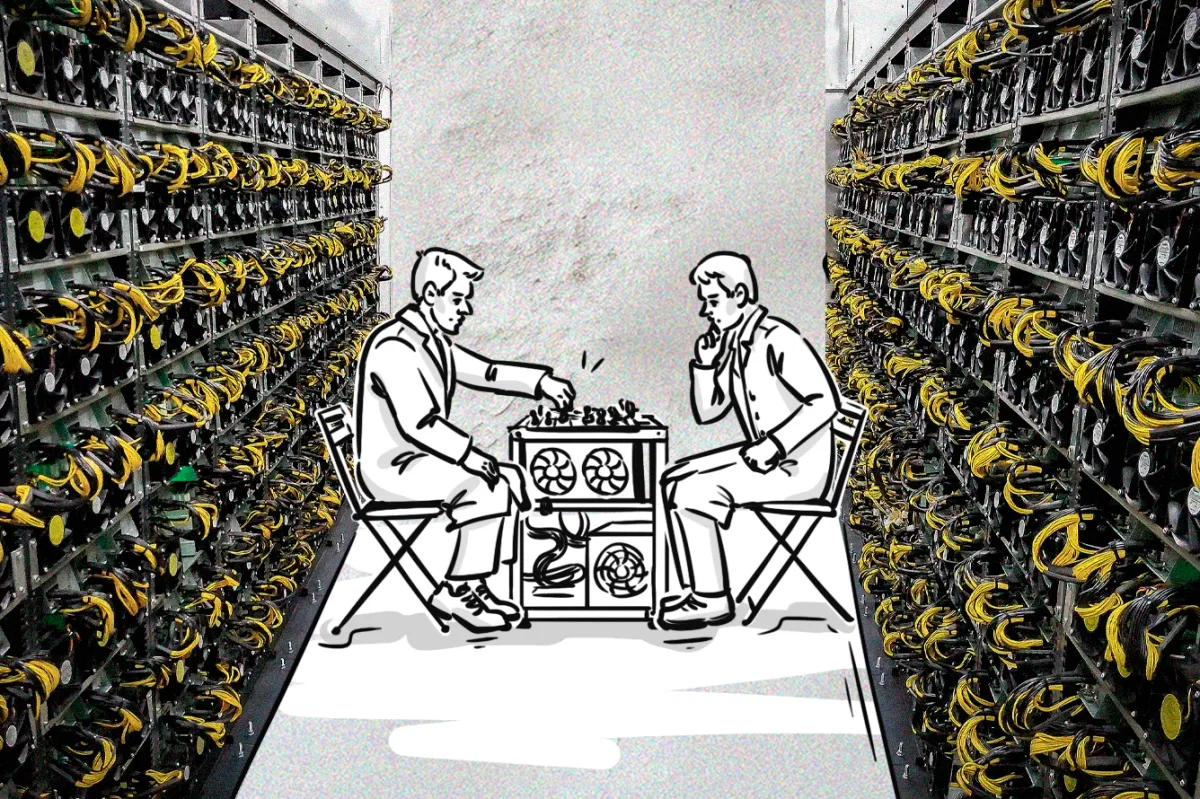
Bitcoin block number 840,000 was mined on April 19, 2024, completing the fourth halving. It generated a record 37.6 BTC fee (over $2.4 million) as miners competed for the milestone block. The lucky winner was ViaBTC mining pool, and the block reward meant ownership of the first post-halving Satoshi.
Following the quadrennial Bitcoin halving event, miners' revenue for creating a block was cut in half from 6.25 to 3.125 BTC. With the energy and technology costs remaining the same as before, mining might become more expensive if Bitcoin prices retreat.
To minimize the impact of the incentive cuts on their business, mining companies have been exploring new revenue avenues, cost-cutting operational changes, new economic activities, and different contract types.
Bitcoin Hoarding
Bitcoin block-producing enterprises have been stocking up on Bitcoin. According to TheMinerMag, on March 31, mining companies collectively held more than 46 thousand BTC.
The last time industry reserves had been as high was before the end of the last bull cycle, in April 2022, when they were 48 thousand.
Miners are hoarding Bitcoin, hoping the asset's price will increase post-halving. Before the third halving in May 2020, the price of a BTC was around $9.500. By the end of that same year, it had shot up to $29,000.
From Bitcoin Mining To AI Computing
Blockchain and artificial intelligence are two of the major revolutionary technologies of our time, and they share a critical issue. Both need a tremendous amount of energy to function.
In a report released earlier this month, CoinShares noted that some of the top mining companies, such as Hive and Hut8, are already reporting revenue from AI computing, and others, such as Bit Digital, TeraWulf, and Core Scientific, have plans to either develop or expand their operations, with artificial intelligence.
While both activities are energy-consuming, their use of energy and internet uptime varies. Bitcoin mining is "ideal for locations with less reliable energy sources, such as sites using renewable energy or stranded gas flaring, where uptime requirements are flexible."
On the other hand, AI computing, rather than being a commitment to a decentralized network like mining, is a contractual agreement with a centralized company, meaning that companies suffer heavy penalties in case of downtime. Firms investing in AI computing will tend to establish their operations in energy-secure locations to avoid this type of loss.
Establishing Favourable Hardware Contracts
Miners compete to create a block by iterating random numbers. Whoever has the best machines is faster. And whoever is faster wins.
With mining revenue being highly reliant on the capacities of the hardware used for operations, mining companies are incentivized to invest heavily in better technology. CoinShares report also highlights how mining businesses are negotiating more favorable option contracts, giving them the right to exercise buy orders for computing units. This allows them more elasticity in the face of adverse market conditions and the ability to adopt new technology easily.
Alternative and Low-Cost Energy Sources
In November 2023, Marathon Digital started a pilot project in Utah collecting methane from the atmosphere that it then uses to generate energy to produce Bitcoin blocks. The energy reutilization plan allows the company to lower production costs while also offsetting the whole industry's carbon footprint.
Some companies are relocating hardware to regions with lower energy costs to lower production costs. After halving, older hardware might be uncompetitive in areas with higher energy input costs. But, as electricity is the largest expense in mining operations, the outdated hardware is still viable in regions where energy costs are cheaper, such as Ethiopia or Paraguay.
Ordinals and Layer-2 Fees
Miners have two ways to make money. The first and most common is via block subsidies, the network rewards for creating a block, and the second is transaction processing fees, which they determine.
Through the years, fees have mostly been negligible, but the situation has changed with the advent of Bitcoin Ordinals and Layer-2 solutions.
As images are stored on the Bitcoin blockchain, Ordinals take much more blockspace than usual transactions, allowing miners to set higher prices to process them. On its end, layer-2s use the Bitcoin network as a settlement layer, meaning it is up to the layer-one blockchain miners to settle transactions, which increases this form of revenue.
Miner incentives arising from creating blocks decrease at every halving. While the price of the tokens tends to rise in the long term, mining difficulty will make this activity unfeasible at some point.
With the technological requirements for mining becoming more complex, the industry is expected to consolidate amongst well-financed top players. However, as technological development unfolds, leading to alterations in input costs and the opening up of new revenue streams, Bitcoin mining is set to evolve in unexpected ways.

